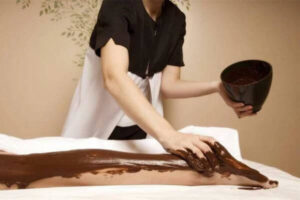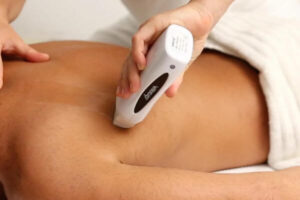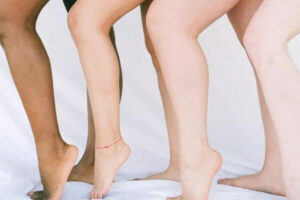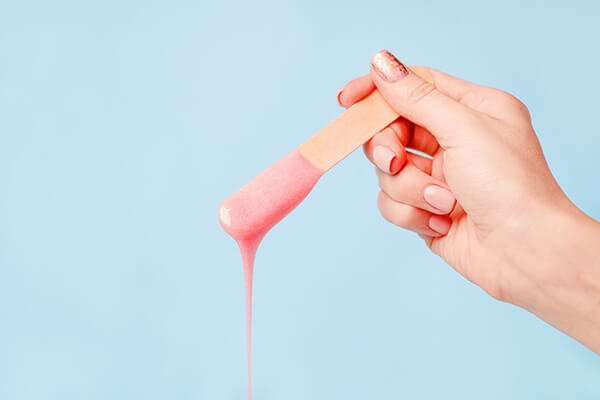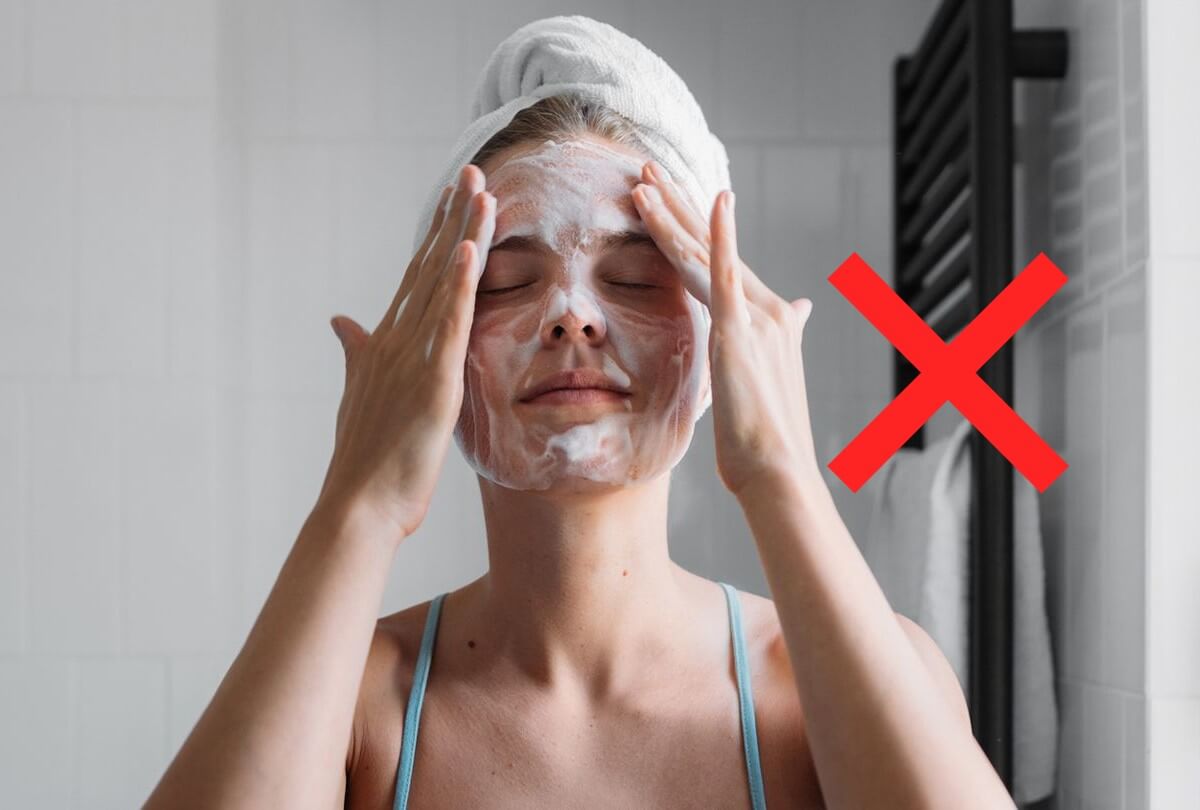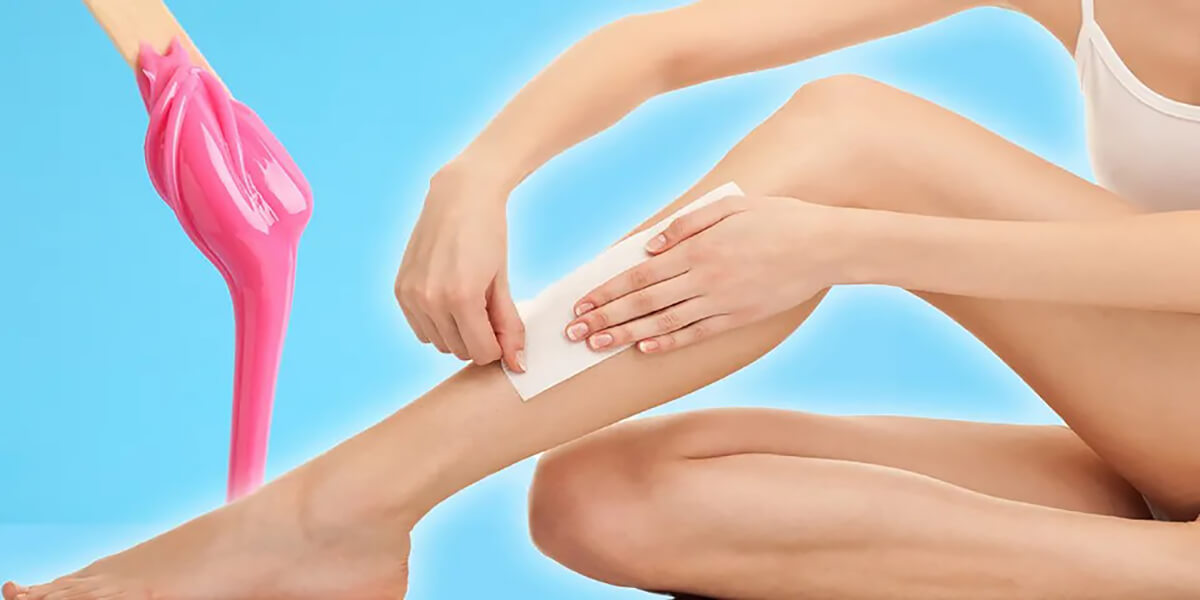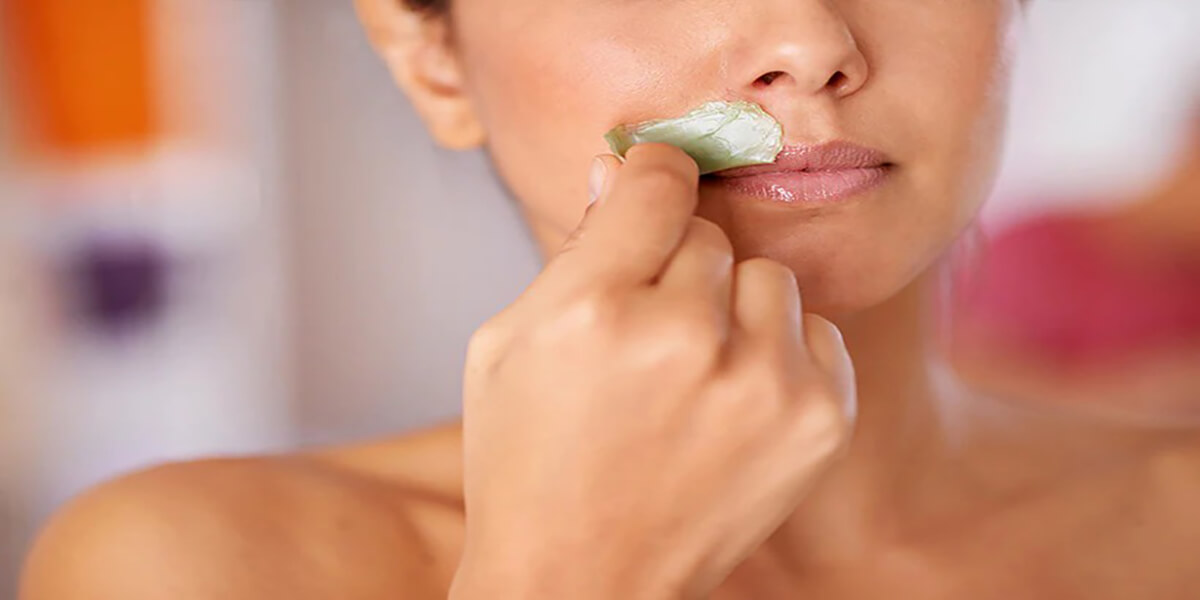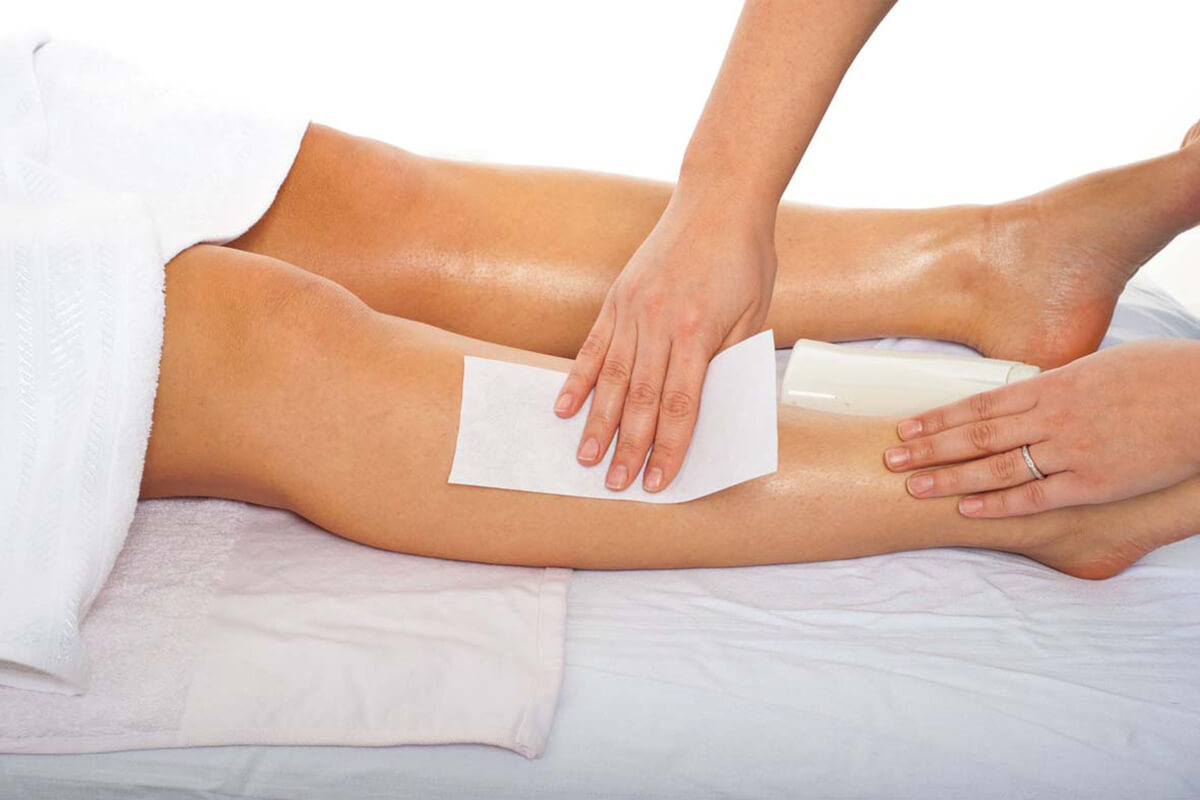For newbies, waxing at home can be a daunting task, and mistakes can be made. However, the benefits are huge: salon savings, blissful convenience, and smooth skin in minutes. A little practice and technique will have you waxing at home in no time. To help you on your way, here are some of the most common waxing mistakes we see all the time and their solutions!
1. The wrong way to prepare your skin for wax
To wash or not to wash. Your choice of wax will determine how long it lasts!
Wash your skin: If you use sugar-based wax, wash your skin before waxing. Sugar wax is water soluble and does not like any residual oil on the skin. Clean, dry skin will help the wax grip the hair for optimal hair removal results.
Don’t wash your skin: If you’re using a resin-based “salon” wax, don’t wash your skin before waxing. Resin-based waxes are oil-soluble. You actually need to preserve that layer of natural skin oils. This reduces discomfort because the wax is less adherent to the skin, but it still does a good job of grabbing and removing hair. If you have already washed your skin, don’t be too nervous, but in this case, it is highly recommended to use some talc or soft powder to provide a layer of protection between the skin and the wax.
2. The wax layer is too thick
This applies to liquid wax removed with fabric (epilation) strips. With these waxes, the key to getting good results is to apply an ultra-thin layer of wax. Sound weird? Surely more wax means more results? Can’t. Thick layers of wax are not as effective at removing hair as thin layers of wax. This is a very common mistake, which means some newbies will give up on these wax types entirely. Now repeat after me, “For removing liquid wax with a cloth strip, a thin layer of wax is key”.
It takes the right temperature and the right viscosity to apply a thin layer of wax. Liquid wax needs to be heated using a microwave or wax heater. If the wax is too cold, the wax will thicken and become difficult to spread. Too hot wax will be too thin and can burn you. The right wax consistency is like liquid honey. Think Goldilocks, the perfect temperature is important for both wax and porridge.
3. Waxing when hair length is too short
Caller: “The wax doesn’t work.”
Parisa Wax: “Can you tell me where the wax is used?”
Caller: “My legs, I usually shave. I used your sugar wax.
Parisa ·Wax: “When was the last time you shaved your legs? ”
Caller: “Less than 1 week ago. “
This is a very common mistake! We strictly recommend the “Two Week Rule”. You do have to wait at least two weeks before waxing, especially if you’ve shaved the area before. Hair length should be approximately 1/4 inch or 1 cm. This will allow the wax to grab enough of the hair for optimal results.
If your hair is not long enough and you use the wrong type of wax (previously shaving your legs required wax strips or warm wax), your hair removal results will be disappointing.
While it’s tempting to epilate right away when you see new hair growth, it’s best to wait at least two weeks before epilating. This will ensure the hair is long enough for effective hair removal and super smooth results.
4. Start waxing on the harder areas instead of the easy areas
Most people don’t climb Mount Everest on their first hike. If you’ve never had waxing done before, don’t start with your Brazilians or underarms. The easier areas to start waxing are always the arms or legs. These areas are larger and have convenient transportation. As you learn good hair removal techniques and gain confidence, you can tackle harder-to-reach areas, including bikini areas, underarms, and facial hair removal. Some waxes are better for beginners than others. We recommend wax strips as they are the easiest to use for those new to waxing.
5. Choosing the wrong type of wax for your body part
Waxing products are not one size fits all. Most people don’t know that there are different types of wax. Understanding the purpose of each wax will help you achieve optimal hair removal results and reduce discomfort.
Hot wax is suitable for the face, upper lip, underarms, bikini, and Brazilian. It’s also an option if you’re skilled with brows. Hot wax (or hard wax) is a “salon” style wax used for waxing smaller sensitive areas and areas with short or very coarse hair. Hot wax comes in a liquid form that hardens as it cools and “shrink-wraps” all the hair, effectively removing hair. We do not recommend using hot wax to wax large areas such as legs or arms. This is time-consuming, and hot wax is not designed to cover such a large area. There are better options for waxing large areas.
Hot wax is suitable for arms, legs, body, and chest. Warm Wax is also a “salon” style wax that is suitable for all hair types, even coarse hair. The reason you choose warm wax (as opposed to hot wax) is to wax a larger area. This liquid wax can easily cover larger areas and the waxing process will be faster. For example, warm wax would be the best choice for waxing previously shaved legs. Once you perfect your hot wax technique, you’ll be surprised at how quickly you can pull hair away from larger areas.
Wax strips come in different sizes and can be used on legs, arms, and bikinis, and smaller strips can be used on the face and brows. This wax is also a “salon” style wax. The reason you choose wax strips over hot or warm wax is for ease of application. Wax strips are great for people who are new to waxing. There is no liquid wax to handle and no heating is required. The wax comes pre-lined on a cellulose (clear) strip and is as easy as “press on, zip up.”
Sugar wax can be used anywhere, but not on short or thick hair. Sugar wax is the mildest wax available and is ideal for those with sensitive skin or who prefer a washable wax. However, you will get the best results on fine to medium hair types.
5. Wrong cleaning method after waxing
This comes from proper skin preparation. The composition of the wax determines the best method for cleaning it.
Sugar wax = wash off with water. For sugar wax, you can easily remove excess or spilled wax using soap and water.
Resin wax = removed with oil. For resin-based “salon” style waxes, excess or spilled wax must be removed using oil. Our salon range includes hot wax and warm wax formulas. These waxes are insoluble in water.
6. The dewaxing speed is too slow and the skin is not tightly grasped
Ouch! Yes, it hurts, but if you follow these proper wax removal techniques, it’ll hurt a lot less.
Quickly zip up. Have you ever tried pulling the wax strip off very slowly? It’s not as effective, hurts more, and leaves more wax on the skin. Be sure to remove the wax quickly for best performance. The faster the wax is removed, the better the results and the less discomfort.
Hold your skin tightly. Your skin is very mobile, with some areas more mobile than others. If you don’t hold the skin tightly, you may pull the skin outward/upwards as you remove the wax. This can cause additional discomfort. For the best hair removal results and less discomfort, keep your skin firm. Pull the zipper back, parallel to your skin, not straight up. Wax removal is always done in the opposite direction of hair growth.
7. The first time you use wax, you forget to do a patch test
Natural doesn’t mean allergy-free! You may be one of the unfortunate ones who develops an allergic reaction to a particular plant extract. Before applying any new beauty product to your face or large areas of skin, always patch-test a small area and wait 24 hours. If you don’t see any reaction and no redness, the product is safe to use. Please note that sugar wax is the best choice for those prone to allergies.
8. If the temperature is too high when applying wax, it will burn the skin
It’s entirely possible to burn yourself by using liquid wax that you’ve heated for too long. Before applying a large amount of wax to your skin, test the temperature on a small area. Better yet, judging by appearance, if the wax is very watery or runny, it’s probably too hot. With experience, you will learn to tell if the wax is at the right temperature by its viscosity. It’s important to read the instructions, follow the microwave heating times, and be careful when moving the heated wax. Most waxes only need to be heated gently, not like hot lava.
9. Get everything ready before you start waxing
From the safety of your bathroom, make sure you have the time, space, and everything you need before you begin. There’s nothing worse than applying liquid wax to your thighs and discovering that the fabric epilation strips are in another room.
Do you know what hair removal requires? Auperwel wax kits each include everything you need. However, here are some additional things to note:
- Some type of floor covering that you don’t mind accidentally dripping wax on
- Scissors and tweezers. Used to trim long hair before waxing and to tidy up missed hair after waxing.
- Keep the Auperwel photo instructions nearby, they come with every kit.
- Auperwel wax warmers are great for keeping liquid wax and hot wax at the proper temperature.
- Super soothing oil or other oil for cleansing “salon” style wax.
- A damp cloth for cleaning sugar wax.
10. Conclusion
The above are nine common mistakes people make when waxing at home. After reading this article, I hope you will pay attention to these issues. Using wax hair removal correctly can not only remove hair quickly but also ensure your personal safety. If you have any other questions, please contact us for consultation.
How useful was this post?
Click on a star to rate it!
Average rating 0 / 5. Vote count: 0
No votes so far! Be the first to rate this post.
